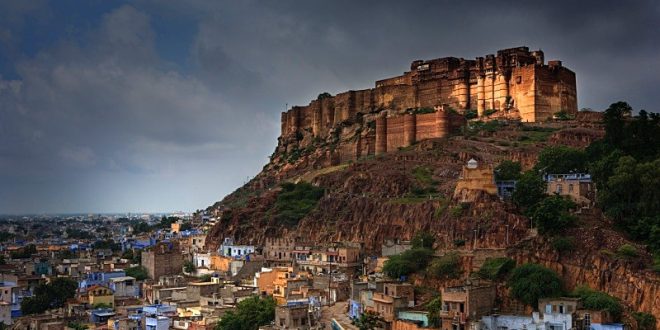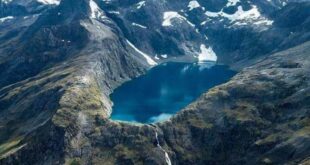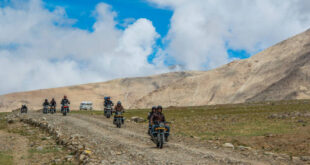DAY 01 DELHI:
You will be met on arrival by a representative and transferred by car to the hotel. The history of Delhi, the capital of India, goes back to 3000 years. Various rulers built eight successive cities in and around present day Delhi. Few capitals in the world have as many monuments of which Delhi is justly proud. Capital to seven different cultures over the course of its history, Delhi is a fascinating fusion of them all. The art and architecture reflects its ancient and multifaceted heritage. A Hindu fortress, Mughal tomb, Islamic minaret and mosque are examples of the cultural richness of this city. Over night at Hotel.
DAY 02 DELHI:
Explore Old Delhi this morning beginning with a drive by the Red Fort, seat of the Mughal Empire. It is a huge fort, housing within its precincts, imposing palaces and impressive public buildings. Construction of the massive fort started in 1638 and was completed in 1648. Shah Jahan, the Emperor behind this creation, was deposed and imprisoned in Agra Fort by his son Aurangazeb.
Enjoy a pedi‐cab ride around Chandni Chowk (an old shopping street). See Jama Masjid, which means Friday mosque. It was built in 1650 and is the largest and the most splendid mosque in India. The mosque is made of glowing red sandstone inlaid with marble and brass, and has three majestic black and white marble domes. Also see Raj Ghat, a memorial to the great Mahatma Gandhi. Visit the Crafts Museum, a collection of traditional Indian crafts in textiles, metal, wood and ceramics. Then see the Temple of the Sikh, Gurudwara.
This afternoon visit New Delhi designed in 1911 by the British, and one of the greenest.
Capitals in the world. See the impressive Qutab Minar, a 234‐foot high red sandstone minaret. The buildings date from the onset of Muslim rule in India. Visit Humayun’s tomb, built in the 16th‐century, a predecessor to the famous Taj Mahal. It is the first Mughal Garden Tomb and tomb of the second emperor of the Mughal dynasty. The terraces of the tomb provide an excellent view of the surrounding city. Continue past the government buildings and Rashtrapati Bhawan (Presidential Palace) along the broad and majestic Rajpath.
DAY 03 DELHI- AGRA:
After breakfast drive to Agra 220 km .The earliest reference to Agra is in the epic The Mahabharat. Ptolemy, Alexander the Great’s geographer also called it Agra. It was, however, in the medieval period that Agra earned prominence as a capital city under the Mughals. Its many wonderful monuments and the Taj Mahal, the greatest of them all, have given it a unique position as a major tourist center. The Taj Mahal, simply, is beauty ‐ not just in design and technique, but also in desire and intent. It was built as a monument to love, a manifestation of life’s most powerful emotion. When his wife died unexpectedly, Emperor Shahjahan vowed to honor her with a memorial of unmatched beauty.
He commissioned the world’s best craftsmen and 20,000 workers to build this beautiful structure. The result stands before you today ‐ a delicately carved, white marble jewel, which seems to float on a sea of red limestone. The Taj Mahal is generally considered the finest example of Mughal architecture, a style that combines elements of Persian, Turkish, Indian, and Islamic architectural styles. In 1983 the Taj became a UNESCO World Heritage Site.
This afternoon visit the important 16th‐ century Mughal monument known as the Red Fort of Agra. This powerful fortress of red sandstone encompasses, within its 2.5‐ km‐long enclosure walls, the imperial city of the Mughal rulers. It comprises many Fairy tale palaces, such as the Jahangir Palace and the Khas Mahal, built by Shah Jahan; audience halls, such as the Diwan‐i‐Khas; and two very beautiful mosques. Overnight at hotel.
DAY 04 AGRA – FATEHPUR SIKRI- JAIPUR:
This morning drive to Fatehpur Sikri, the once‐fabled Mogul capital that has taken on a sleeping beauty quality, lying quietly but wonderfully preserved. The Emperor Akbar built Fathepur Sikri during the second half of the 16th century; Fatehpur Sikri (the City of Victory) was the capital of the Mughal Empire for only some ten years. The complex of monuments and temples, all in a uniform architectural style, includes one of the largest mosques in India, the Jama Masjid. A large number of masons and stone carvers worked hard on an area that was over two miles long and a mile wide. They used brilliant red sandstone available locally, which provides the buildings with much of their luster. Shortly after the work was completed fifteen years later, it was realized that there was a lack of an adequate water supply and the pristine complex was abandoned.
Proceed to Jaipur .The rose‐pink capital of Rajasthan, is surrounded on all sides by rugged hills. The city was founded in 1727 by the astronomer‐king, Sawai Jai Singh II and built according to the Shilpa Shastra, the ancient Hindu treatise on architecture and sculpture. It is a walled city with seven rectangular blocks. The Maharajah’s palace stands in the center of the city amidst lovely gardens.
DAY 05 JAIPUR:
This morning’s excursion takes you to Amber Fort. Riding on elegantly caparisoned elephants, approach the palace in the traditional way. The high gateways allow us to enter on these broad ‐backed animals. Amber was once the ancient capital of Jaipur. Construction of the fortress‐palace started in 1592 by Raja Man Singh, the Rajput Commander of Akbar’s army.
It was later extended and completed by the Jai Singhs. The fort is a superb example of Rajput architecture, stunningly situated on a hillside and over‐looking a lake which reflects its terraces and ramparts. This afternoon explore Jaipur visiting Jantar Mantar, an observatory equipped with instruments of astonishing size and precision, including a 90 foot high sun dial. See the Hawa Mahal or Palace of Winds, a major Rajput landmark built in 1789. This five‐story building in the old city is a pink sandstone masterpiece with semi‐octagonal and delicately honeycombed windows. The monument was originally conceived to enable ladies of the royal household to watch the city’s everyday life and royal processions in absolute privacy.
The City Palace is the royal residence of the erstwhile King of Jaipur. It houses a museum with a superb collection of Rajasthani costumes, armory of Rajput weaponry, and swords of different shapes and sizes with ornamental handles – some of them inlaid with enamel, embellished with jewels and encased in magnificent scabbards. Continue past Moti‐Doongri Palace – a privately owned hilltop fort built like a Scottish castle – to Ram Niwas Gardens and architecturally impressive Albert Hall. Overnight at hotel.
DAY 06 JAIPUR- JODHPUR:
After breakfast drive to Jodhpur. You will be met on arrival and transferred to the hotel
The 15th century city of Jodhpur, stands at the edge of Thar Desert and is the second largest city in Rajasthan after Jaipur. Jodhpur is a resplendent city, with a blend of modern and traditional buildings. The city is totally dominated by a massive fort sprawled across 125‐ meter high hill known as Meherangarh Fort, founded by Rao Jodha in 15th century. A flourishing trade center in the 16th century, Jodhpur is still one of the leading centers of wool, cattle, camels, salt and agricultural Crops. It boasts of some of very fine reminders of its glorious past‐palaces, temples and other elegant monuments of architectural and historical significance. Also Jodhpur is popularly known as the ‘Blue City’ because of the beautiful houses painted with indigo color mostly belonging to the Brahmin caste.
Afternoon visit the Meherangarh Fort and enjoy a magnificent view of this Blue city from the ramparts. Considered one of India’s best forts, this invincible stronghold of Marwar sits on a steep hill lording over a wonderful view of its surroundings.
It is also a beautiful fort and undoubtedly, the jewel of Jodhpur. Intricate latticed windows, elaborately carved panels and elegantly curved porches speak of beauty and taste. No matter what part of the fort you are in, its ambience will leave you in awe and your senses reeling. Take in the sight high up on the rampart where the second largest cannon in Asia rests. Also visit Jaswant Thada – a white marble memorial built in memory of Maharaja Jaswant II in 1899. Overnight at hotel.
DAY 07 JODHPUR -UDAIPUR :
This morning we’ll drive through valleys in the remote and peaceful Aravalli Range to RANAKPUR to visit one of the most important Jain temples in India. This marble complex is noted for the 29 halls supported by 1,444 pillars, each adorned with hundreds of carved figures, no two alike. We’ll continue driving south, arriving Udaipur, described as the “City of Sunrise” in the evening. In the evening you will enjoy a leisurely boat ride on LAKE PICHOLA. With its main attractions being the two palaces on the islands in the lake, Jagniwas and Jagmandir Lake Pichola is about 4 km in length and 3 km wide. Jagniwas was earlier the summer retreat of the prince of Mewar and now a five-star hotel. The city palace extends along the eastern shore of the lake and you can go for a boat ride from Bansi Ghat. Overnight at hotel.
DAY 08 IN UDAIPUR :
Udaipur is also a centre of historic arts and crafts of Mewar, like the Mewar School of Miniature Painting. There is of course the modern face of Udaipur that one can look at if interested, but given the other sights from a glorious past, modernity is no real distraction. This is a place that will hold you in its thrall no matter whom you are or where you come from.
During a guided tour you will visit the CITY PALACE built in 1725, the grand City Palace is actually a conglomerate of eleven palaces overlooking the sprawling Lake Pichola. One of the largest, most beautiful palaces in the state of Rajasthan, it is now a museum, royal residence and a luxury hotel.
This intricately designed monument is an architectural wonder in granite and marble; JAGDISH TEMPLE built in 1651 by Maharaja Jagat Singh, this temple is dedicated to Lord Vishnu and is located in the centre of the old city. The temple has a black marble image of Lord Vishnu, which is unusual for the northern part of the country, where statues of Gods are normally in marble. In the afternoon, enjoy the boat ride on Lake Pichola (Subject to water level in the lake). Return to your hotel for overnight stay.
DAY 09 UDAIPUR – Departure:
After breakfast departure transfer at Airport or Railway Station.
 Travel India Vacations All India Tours and Travels
Travel India Vacations All India Tours and Travels





